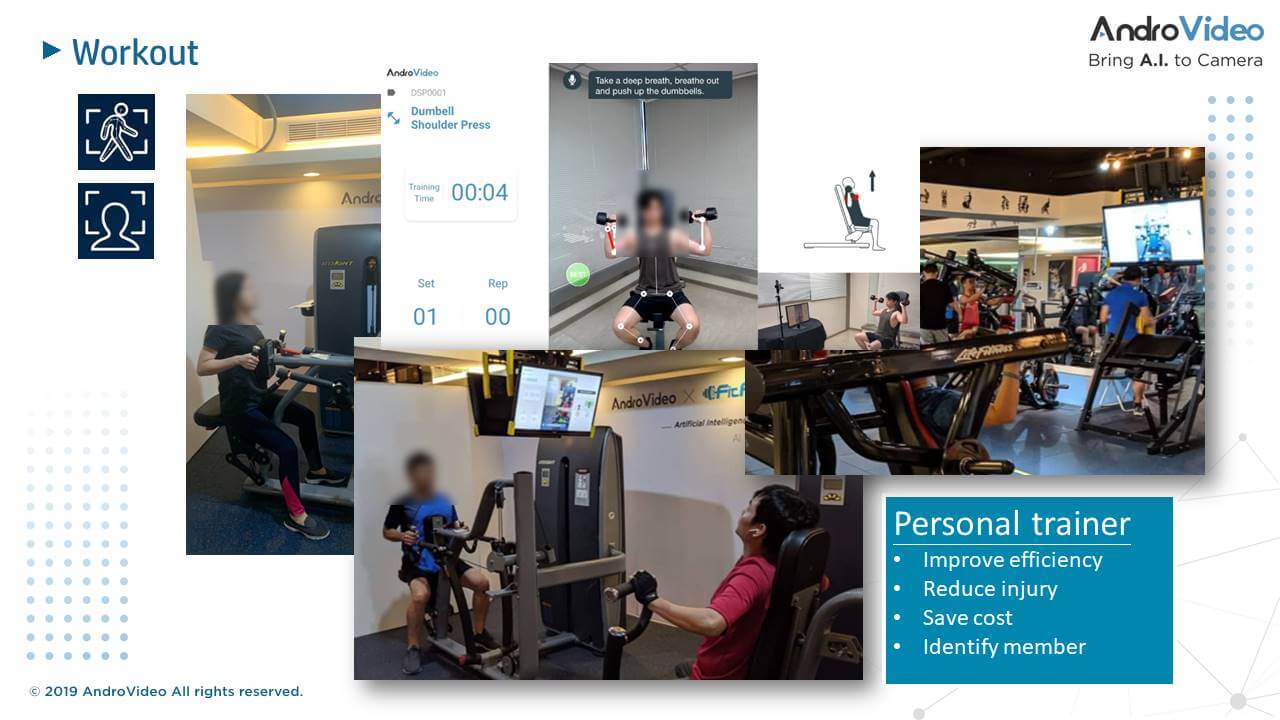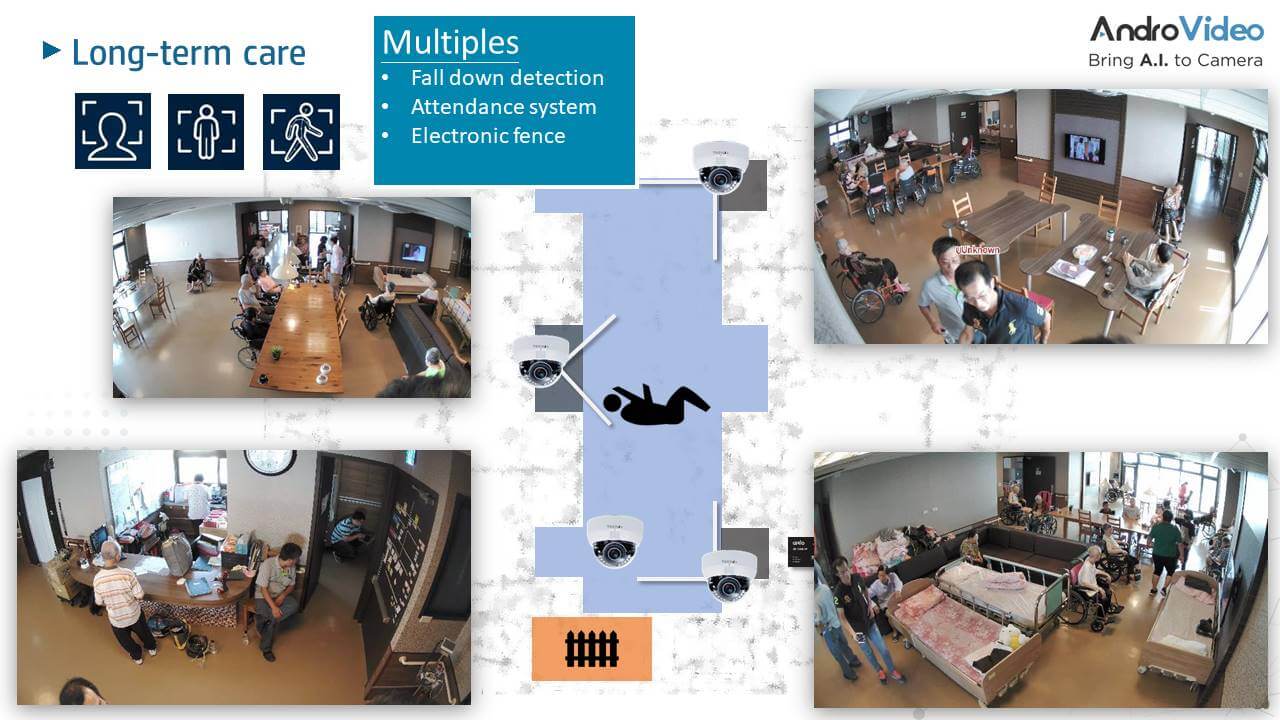AI edge computing has various applications, some of which are quite unique and special and can help solve end user’s specific needs, not to mention increase their revenue.
Increasingly, processing
AI on the edge device has become a trend in video surveillance. As opposed to cloud computing,
edge computing refers to the processing of data in the camera itself, some equipped with AI- or deep learning-based analytics tools. Moving the processing capability to the edge device has various benefits, including bandwidth optimization and instant detection and response to incidents.
Beyond security, AI edge computing has non-security applications as well, some of which are quite unique and special and can help solve end user’s specific needs, not to mention increase their revenue. These unique applications are described as follows.
Workout at gym

AI on the edge can benefit gym operators and customers in many ways, said Jonny Wu, VP of
AndroVideo. The company has partnered with several gyms to trial its AI cameras with onboard position estimation analytics, which AndroVideo refers to as “AI coach.”
The AI coach watches the customer as they do workout with free weights or fixed equipment, and offers advice, via text messages on the screen, on how to adjust wrong moves or positioning, which can lead to poor workout results, or worse, injuries.
According to Wu, the AI coach can help gym customers reach their desired target. “We’ve done test trials on two groups of entry-level customers, one with the assistance of the AI coach and one without. For the first group, 40 percent reached their desired goal of muscle mass increase and reduced fat, while for the second group only 7 percent reached their target,” Wu said.
What’s more, once the user achieves certain initial results with the AI coach, the gym can then upsell them with more advanced packages to help increase revenue. “For a typical gym, there’s a high percentage of potential customers who hesitate to purchase lessons, which represent the gym’s main source of revenue. It they use the AI coach to get good initial results, it’s easier for the gym to sell the lessons to them and increase revenue by a significant margin,” Wu said.
Care facilities
Besides the workout use case, care facilities that cater to senior citizens are another unique application of AI edge computing, whereby the camera can detect residents entering off-limits areas or those who fall and can’t get up.

According to Wu, AI edge computing in care facilities will only increase down the road due to a supply shortage of workers. “Professional, licensed caretakers are hard to find these days. This is bad news amid an increasing aging population. A lot of facilities we visited, they have caretakers who are retired nurses. Young workers are hard to find,” Wu said. “The worker shortage is a major problem, and we seek to solve this problem with AI on the edge solutions.”
This is the rationale behind a partnership between the Institute for Information Industry, the Long-Term Care Association of Taiwan and AndroVideo, which has deployed its edge AI solution as a proof-of-concept at two care facilities under the association. The solution performs three functions as follows:
- Roll-call: Facial recognition-enabled cameras are deployed at elevator entrances to take attendance of residents each morning. Any no-show will be notified to the operator.
- Trespass prevention: Some residents are known to wander into nursing stations while nurses patrol the building. Cameras with human detection algorithms are installed at these stations to alert the operator in the event of unauthorized people wandering in.
- Fall detection: In the event of residents falling and unable to get up after a certain time, cameras with pose estimation can detect the incident and alert the operator accordingly.
“With AI edge computing, caretakers don’t have to constantly check on residents or be bothered with false alarms; they can focus on the more important tasks at hand,” Wu said.
According to Wu, privacy is not a concern as in both the workout and senior care scenarios, the camera is used merely as a capturing and analytics tool, and no video footage is stored.
“Our solution only analyzes a person’s skeletal positioning and does not store anything, and thus is not in violation of privacy laws, which are concerned with what privacy-related data is generated and how such data is used,” Wu said.
Meeting end user’s needs
AI edge computing in video surveillance has various applications: AI cameras in retail stores can identify the customer’s age and gender profile, and AI cameras deployed in plants and factories can detect defects instantly and issue an alert to the operator. Workout and care facilities add to those applications as unique solutions to solve customers’ specific needs. AndroVideo’s examples of targeting certain special niches and providing value to them demonstrate how AI edge solutions providers can win out amid the competition.